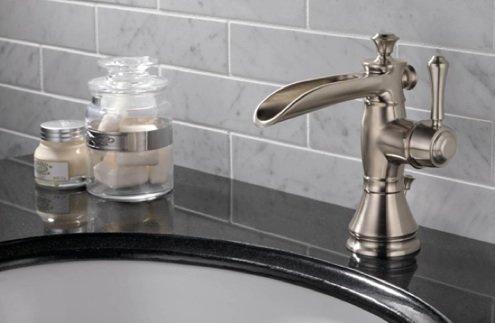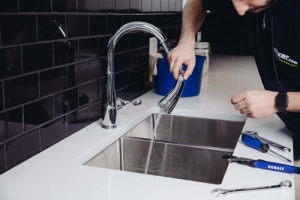Motives Why It's Vital to Rectify a Broken Faucet
Motives Why It's Vital to Rectify a Broken Faucet
Blog Article
The article author is making several good pointers regarding Why Are My Faucets Dripping (And Can I Fix It Myself)? in general in this content directly below.

Leaking taps might appear like a small trouble, however their impact exceeds simply the nuisance of the audio. From wasting water to sustaining unneeded monetary expenses and health threats, neglecting a leaking tap can lead to different effects. In this write-up, we'll explore why it's vital to address this usual home concern promptly and properly.
Wastefulness of Water
Ecological Influence
Trickling taps add significantly to water wastage. According to the Epa (EPA), a single tap leaking at one drip per second can throw away greater than 3,000 gallons of water each year. This not just stress water resources yet also influences ecosystems and wild animals based on them.
Financial Prices
Increased Water Bills
Past the environmental influence, dripping taps can blow up water expenses substantially. The collected wastefulness gradually converts right into higher utility expenditures, which could have been prevented with prompt repair services.
Possible Home Damage
Moreover, extended dripping can result in damage to components and surface areas bordering the tap. Water accumulation can create staining, corrosion, and even architectural problems if left unattended, leading to extra fixing costs.
Wellness Issues
Mold and Mold Growth
The constant existence of wetness from a dripping tap produces an ideal setting for mold and mildew and mold growth. These fungis not only jeopardize interior air quality but likewise position health and wellness threats, specifically for individuals with breathing problems or allergic reactions.
Waterborne Conditions
Stationary water in dripping taps can come to be a breeding place for bacteria and other virus, raising the danger of waterborne illness. Pollutants such as Legionella microorganisms thrive in stagnant water, possibly bring about severe ailments when consumed or breathed in.
DIY vs. Specialist Repair service
Benefits and drawbacks of Do It Yourself Fixing
While some might try to take care of a dripping faucet themselves, DIY repair work include their very own collection of obstacles. Without proper understanding and tools, DIY attempts can exacerbate the concern or bring about incomplete repairs, extending the issue.
Advantages of Hiring a Specialist Plumber
Working with an expert plumber guarantees that the underlying root cause of the leaking tap is dealt with properly. Plumbing professionals have the expertise and equipment to identify and repair tap issues efficiently, conserving time and lessening the threat of more damage.
Step-by-Step Overview to Dealing With a Dripping Tap
Devices Called for
Prior to trying to take care of a leaking faucet, collect the necessary devices, including an adjustable wrench, screwdrivers, replacement components (such as washing machines or cartridges), and plumber's tape.
Common Tap Issues and Their Solutions
Identify the type of faucet and the specific concern causing the drip. Typical troubles consist of damaged washers, rusty valve seats, or malfunctioning O-rings. Describe maker directions or online tutorials for step-by-step advice on repair work.
Preventive Measures
Regular Upkeep Tips
To avoid trickling faucets, perform regular maintenance such as cleansing aerators, inspecting for leaks, and replacing worn-out parts immediately. In addition, take into consideration installing water-saving devices or upgrading to much more reliable components.
Importance of Prompt Repairs
Dealing with dripping faucets as soon as they're observed stops more water waste and possible damages, ultimately saving both water and cash in the future.
Effect On Residential Or Commercial Property Worth
Assumption of Well-Maintained Residential Or Commercial Property
Preserving a property in good condition, consisting of dealing with upkeep issues like leaking taps, improves its regarded worth and value amongst potential purchasers or renters.
Impact on Resale Value
Residences with well-kept plumbing fixtures, including taps, command greater resale worths in the realty market. Attending to dripping taps can add to a positive perception throughout residential property examinations and negotiations.
Environmental Responsibility
Private Payment to Conservation
Taking responsibility for repairing trickling faucets straightens with broader efforts towards water preservation and ecological sustainability. Every person's actions jointly make a considerable influence on preserving valuable resources.
Sustainable Living Practices
By prioritizing prompt repair work and embracing water-saving routines, people add to lasting living techniques that profit both existing and future generations.
Verdict
Attending to a leaking faucet goes beyond simple benefit; it's a necessary action toward conserving water, reducing financial costs, and securing health and residential or commercial property. Whether through do it yourself repair work or professional aid, taking action to deal with leaking taps is a little yet impactful way to promote liable stewardship of sources and add to a healthier, more lasting future.
How to Fix a Leaky Faucet: Step-by-Step Repair Guide
A leaky faucet may seem like a simple annoyance, but if it's not fixed promptly, that leak could cost hundreds to potentially thousands. From water damage to mold, mildew, and high water bills, even a tiny leak can be catastrophic if left unattended. Damage like this can even affect the overall value of your home, so it's important to take the right approach for leaky faucet repair. You may need the help of a plumber in some cases, but we've got a few tips you can try on how to fix a leaky faucet before calling the pros.
Four Faucet Types
When you're learning how to fix a leaky faucet, the first step is knowing what kind of faucet you're working with! There are four common types.
Cartridge Faucets
Cartridge faucets come in one- or two-handled varieties. In one-handled cartridge faucets, hot and cold water combines in a single cartridge. In the two-handled versions, hot and cold water are controlled separately and mixed in the faucet.
Ball Faucets
Ball faucets have a single lever you push up and down to adjust the pressure and rotate to change the temperature. A slotted metal ball controls the amount of water allowed into the spout.
Compression Washer Faucets
They're the oldest type of faucet, but they're still used in many homes — especially older ones. Compression faucets have two separate handles that, when turned, raise or lower the washer that seals a water valve. This valve stops water from flowing through the faucet when it is turned off.
Disc Faucets
Disc faucets rarely need to be repaired due to their maintenance-free design. The water flow is controlled by two discs — the upper one raises and lowers against a fixed lower disc, creating a watertight seal. If your disc faucet starts leaking, you may need to replace the seals or clean residue buildup from the inlets.
Fixing a Leaky Faucet
Step 1: Turn Off the Water
Whether you're learning how to fix a leaky bathtub faucet or how to fix a leaky kitchen faucet, always turn off the water supply to your working area when you're fixing a leak. The last thing you want is a flood added to your list of things to fix.
Look for the shutoff valves below your sink or around the tub and turn them clockwise to stop the water flow. If your faucet doesn't have shutoff valves, you may need to turn off the water for the whole house. Check to make sure it's off by turning the faucet on. If nothing comes out, you're ready to start the repair.
Step 2: Take Apart the Faucet
How you disassemble your faucet depends on the type of fixture you have. You can use a flathead screwdriver to remove the caps on top of the handle or handles for cartridge and compression faucets. Inside, you should see handle screws. Unscrew these with a screwdriver to remove the handle.
Disc- and ball-style faucets will typically have an inlet screw near the handle, and removing that will reveal the interior of the faucet.
Detach the Valve Stem
For cartridge- and compression-style faucets, you'll see the inner valve stem or cartridge once you remove the faucet handles. If you have a compression faucet, unscrew the brass valve stem. If you have a cartridge faucet, pull out the cartridge. If your cartridge has been in place for a while, it may require some tools or extra force to remove it due to mineral deposits.
Examine and Replace Parts
Once you've removed the parts, check them out to confirm what needs to be replaced. You may see corroded rubber washers, O-rings, stems, or cartridges. On a ball-style faucet, check the seats and springs for damage.
If you need to repair a leaky disc faucet, check the inlet and seals on the lower disc.
Once you determine what parts must be replaced, visit your local hardware store. Bring the damaged parts with you to ensure you can purchase the correct components to replace them.
Clean Valves and Faucet Cavity
If you've removed a stem or cartridge, you may notice mineral buildup in the faucet's threads. Use white vinegar to clean the valve seat by soaking it for a few minutes, then scrub it away with a soft toothbrush and rinse with warm water. You can also clean the interior of the faucet in the same way.
Reassemble the Faucet
Once your faucet is cleaned and the required parts have been replaced, it's time to reassemble it. Put the pieces back together and slowly turn the water supply back on. Doing this slowly is crucial because too much initial water pressure can damage the new hardware you've just installed.
https://homewarranty.firstam.com/blog/how-to-fix-leaky-faucet

Do you like reading up on Water Dripping from Faucet: Why and How to Fix? Give a remark down the page. We will be glad to know your thoughts about this posting. We hope that you visit us again in the future. Make sure you pause to promote this article if you appreciated it. Thanks a lot for your time spent reading it.
Report this page